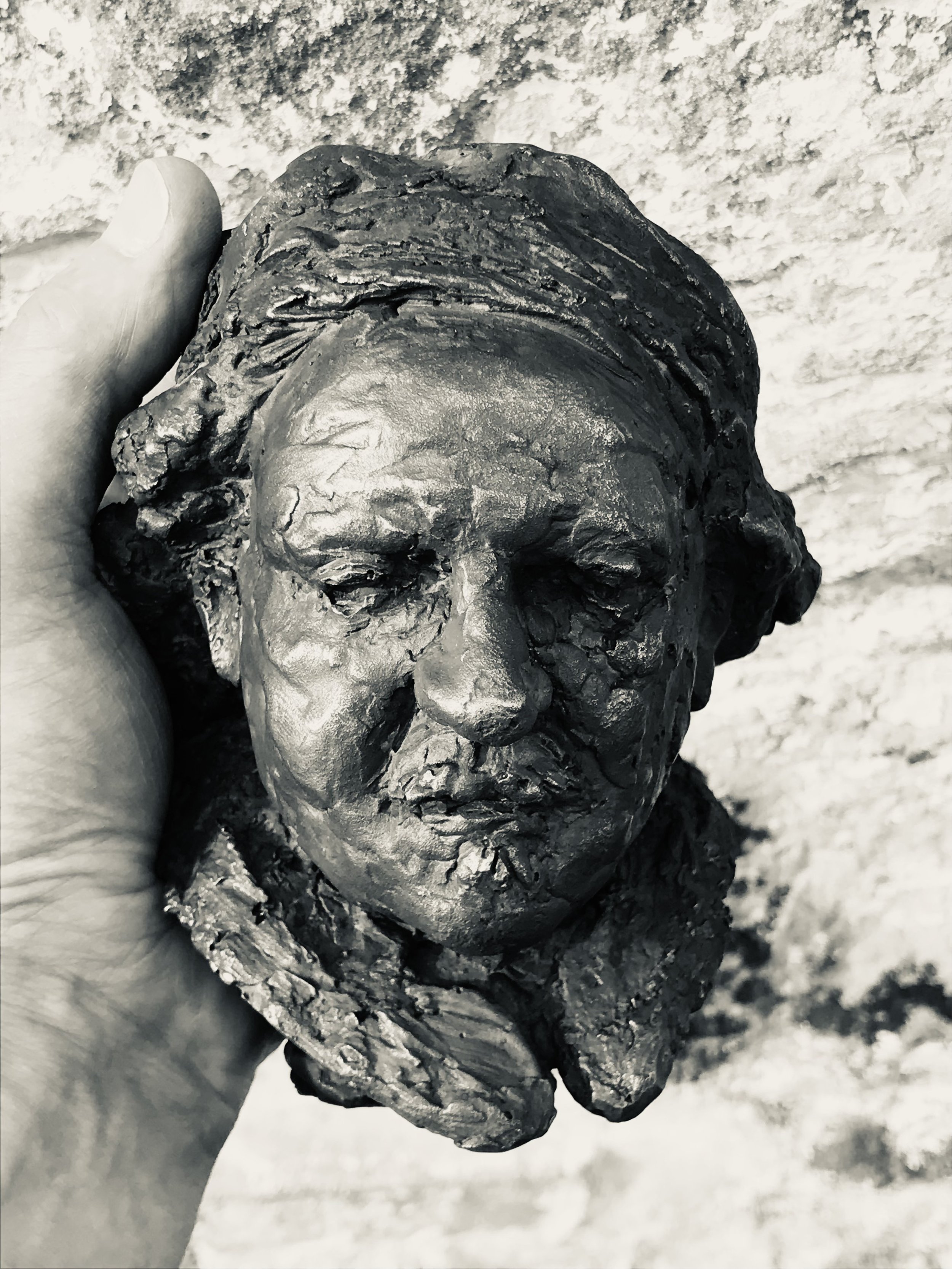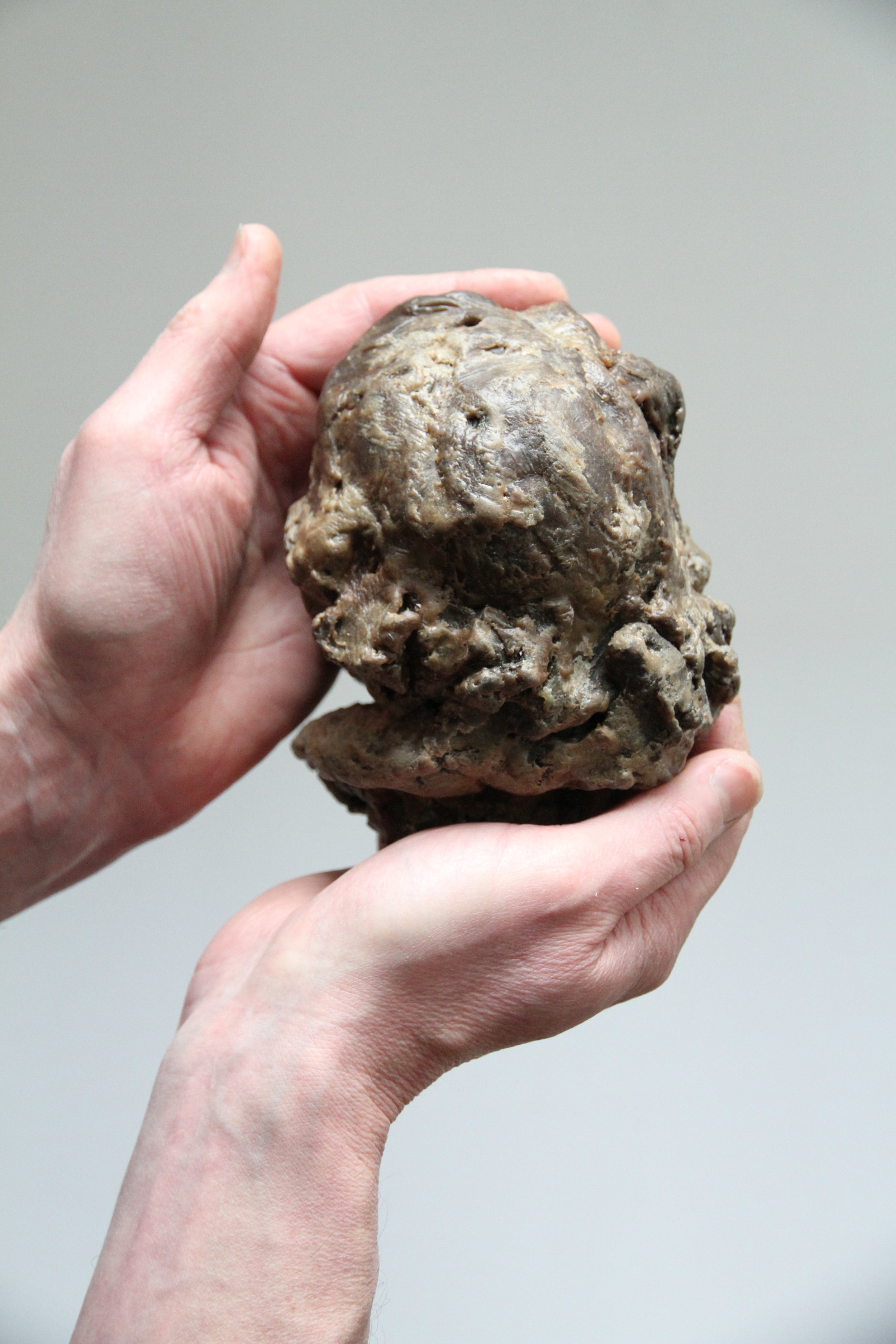
Rembrandt: Waxen
Ali Cherri's artist residency at the National Gallery in 2021 coincided with the gallery's major exhibition 'Poussin and the Dance'. Featured in that show were the hand-modelled wax figures reimagined by Siân Lewis and myself, describing how Poussin would have explored the elaborate compositions for his paintings. Both the drawing for the 'Abduction of the Sabines' and the painting of the "Triumph of Pan' were summoned into life in this way and given physical form. It was these waxen figures that Ali deeply enjoyed, later inspiring a conversation and invitation to collaborate in his 2022 exhibition at the National Gallery, London 'If You Prick Us, Do We Not Bleed?.
A Tenderness of Scale
Ali asked if I would imagine my way into a sculptural portrait head modelled in wax taken from Rembrandt's 'Self Portrait, aged 63'. This painting was violated in the past, daubed with yellow paint and removed from display. Although the painting is clearly a brilliant and unflinching portrait of an ageing and time-worn man, it does not speak of him in the round, in the three dimensional world. As Rembrandt looks out at me from the painting, his body, physicality, even the room he stands in is concealed from me. My approach was to look beyond the surface, deep into the texture and marks of the oil itself, gradually becoming aware of something else. This deep exploration of the two dimensional plane revealed coordinates of the unseen beyond, indicating not just his physicality but the attitude and emotion. Thus began the dialogue with Rembrandt's painting.
In studying his face, the eyes and the fleshiness of his skin a deep tenderness and humanity revealed itself to me. Rembrandt's own use of oil in his painting resonates with thebeeswax used for the model. There are not exact parallels or physical synonyms but both have a tacit or shared nature. Both wax and oil offer a rich palette to the senses. The aroma and taste remind us of the plants, meadows, seasons and landscapes they derive from. They provide a keenness and subtlety of mark making that requires an unhestitant hand. No tools for modelling are superior to the delicate movement of a fingertip and I suspect that Rembrandt's own fingers manipulated oil and pigment as much as the brush. At the time of our early discussion, neither Ali nor I knew exactly how the wax portrait would be displayed in the exhibition, although he asked if the head could be made as small as possible. The size of my palm would be it's natural measure. This point is important!
When the wax model is held in the hand a 'tenderness of scale' transmutes it into an object of compassion and humility. The adult head becomes a child's and the warmth of the wax becomes flesh. I did not expect or anticipate such a material or emotional transformation.
Now in Ali's show Rembrandt's head is suspended by a chain from a hawk's talon of a hook, within the protective solitude of a glass vitrine. He is safe, he is quiet, he is alone and tender.

If you prick us, do we not bleed?
"A wax model of the artist's severed head dangles from a chain like a trophy. Its dark colour and small size remind one of the shrunken heads sported by cannibals as proof of their military success.
Cherris responses invite one to contemplate the degree to which artworks can be restored. Are they, like people, damaged permanently by trauma or are they venerated more highly once their frailty has been revealed? Is their value increased or diminished by the damage they have sustained?" Exhibition review - The Arts Desk, 2022.
Ali Cherri, artist in residence - National Gallery London, 2022.

















